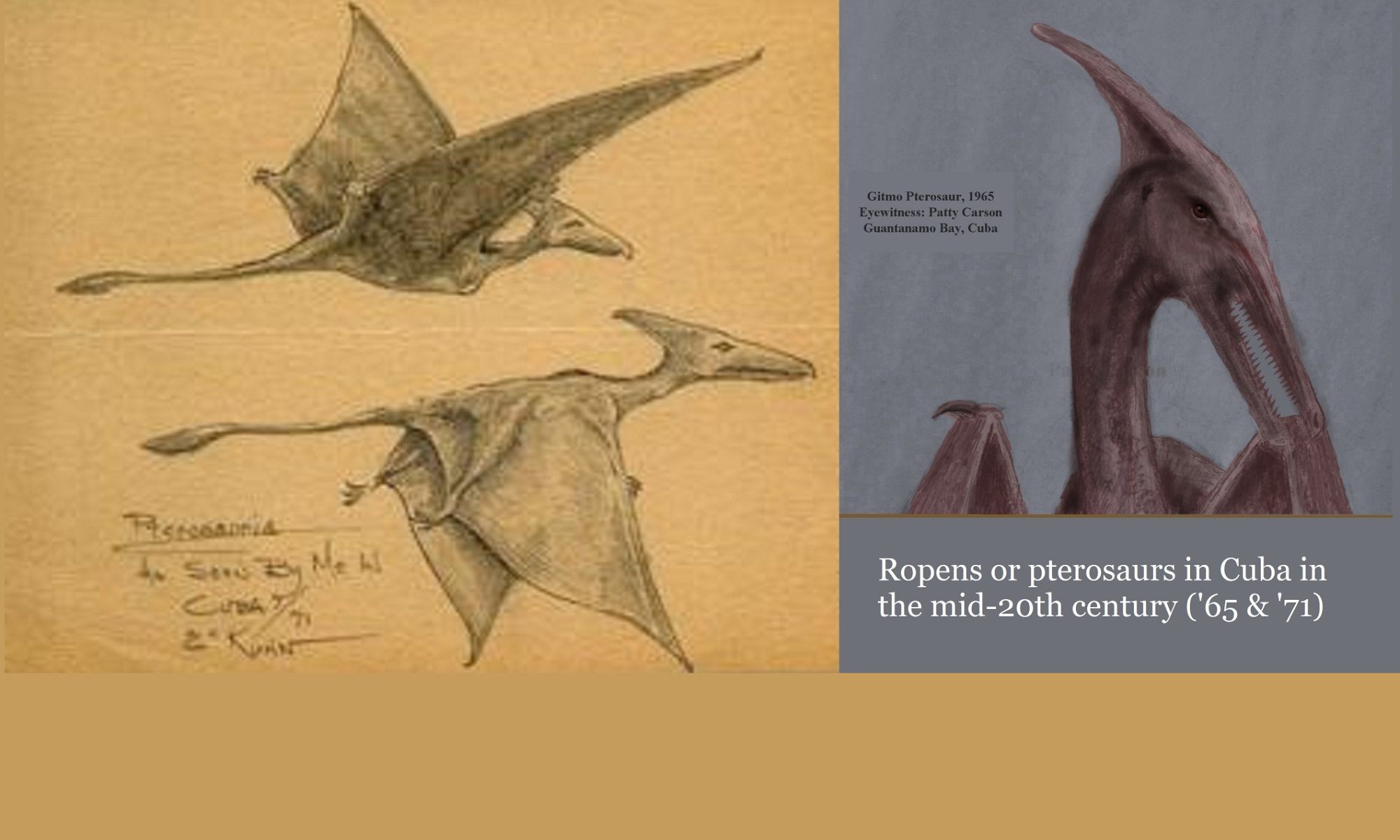Introduction
A recent post by Dale Drinnon brought up an old suggestion that sightings of giant long-tailed pterosaurs may be misidentifications of large Manta rays (a type of fish) that leap out of the sea. Let’s examine this idea in more detail than is seen in Drinnon’s brief commentary.
First we consider the limitations of his suggestion: “. . . many of these sightings are actually of Manta rays leaping above the surface.” He does not imply that all sightings of modern pterosaurs are from this kind of misidentification, only “many” of them.
But what sightings does he refer to? He mentions only one: a 2008 sighting of two “pterodactyls” in the Philippines. It seems Drinnon was attracted to the part of the report that referred to the fishermen who told the “pterodactyl” eyewitness that they had seen this kind of flying creature. But even in that case, I doubt that the fisherman was referring to the fish that we call “Manta ray.” The critical point is that the man who witnessed the sighting of two apparent pterosaurs was in a CITY, not in a boat. And he saw two of the creatures flying together. That eliminates that sighting regarding Manta rays that leap out of the sea: It was not a misidentification of a fish. Drinnon, it seems, was unaware of the larger report when he quoted a portion of the original (the fishermen had limited relevance to the sighting in question).
Wing Shape
He mentions “broad diamond-shaped wings,” as if eyewitnesses have reported that feature. I don’t recall even one eyewitness using the word “diamond” when referring to wings. Many sighting reports (in which a tail is mentioned) include the word “diamond” or “triangle” (or a similar word) when referring to the END OF THE TAIL. That in itself eliminates the Manta ray fish from consideration.
Consider the detailed survey form given to eyewitnesses on Umboi Island (by Garth Guessman and David Woetzel) during the second ropen expedition of 2004: the page with thirty-four silhouette images of birds, bats, and pterosaurs. Only two eyewitnesses, if I’m not mistaken, had a clear-enough view of the ropen to accurately respond to this questionnaire page: Jonathan Ragu and Jonah Jim. They both chose, from among the thirty-four choices, the same image: Sordes pilosus:

If we consider only the depth of the wings (front-to-back) nearer the body of the creature, this may be the best correlation with the fins of the Manta ray fish. But when we examine details, the flying-fish idea is shot down.
- Jonah Jim’s sighting was miles from the sea. The ropen was flying above the land.
- Both Jonah Jim and Jonathan Ragu reported a glow coming from the flying creatures.
- Ragu’s creature was flying too high to have been a fish: “Glowing brightly red and white from the head and trailing edges of the wings, it flew fast, at tree-top level.” (Searching for Ropens, second edition; emphasis added)
- Jonah Jim’s creature “was flying between 500 and 550 feet high, coming from the sea” (SFR): too high.
Perhaps the image chosen by Ragu and Jonah Jim are the best evidence for the possibility of a Manta ray misidentification, regarding the shape of the wings or fins, but this is only superficial. I have trudged through the rain forest of Umboi Island, the same island where these two sightings took place, and can testify that “tree-top level” is much higher than the ten feet or so that a Manta ray can jump out of the water. And who suggests that Manta rays are bioluminescent? Anyway, nobody is suggesting that those fish can fly miles from the sea, over jungle canopy.
Tails of Pterosaurs and Manta Rays
Drinnon mentions a “long stringy rat-tail.” Where did he get that description? He give no example. Offhand, I don’t know of even one eyewitness who has mentioned anything like that when referring to the tail of the flying creature observed. That’s not trivial. In the past nine years, I have written three nonfiction books on living pterosaurs and one scientific paper in a peer-reviewed journal of science. I have questioned countless eyewitnesses from around the world (mostly from the continents of North America, Australia, Europe, and Africa), and I have received many answers. I don’t recall even one of those answers including the word “stringy” or “rat.”
Misidentification Pursuits
I don’t criticize persons for simply searching for an alternative explanation, including misidentification. Modern living pterosaurs—that concept shocks many people who live in Western society, who have been raised since early childhood with the paradigm of universal dinosaur and pterosaur extinction. But we need to dig deeper before proclaiming a particular misidentification conjecture has any merit. The jumping Manta ray fish quickly falls back into the depths, never attaining the distinction of flying over tropical forest tree canopies.
Pterosaur Bioluminescence and “Red Herrings”
. . . that critic seems to have neglected the necessary research, for the case for glowing pterosaurs, living in this modern age, actually appears significant.



